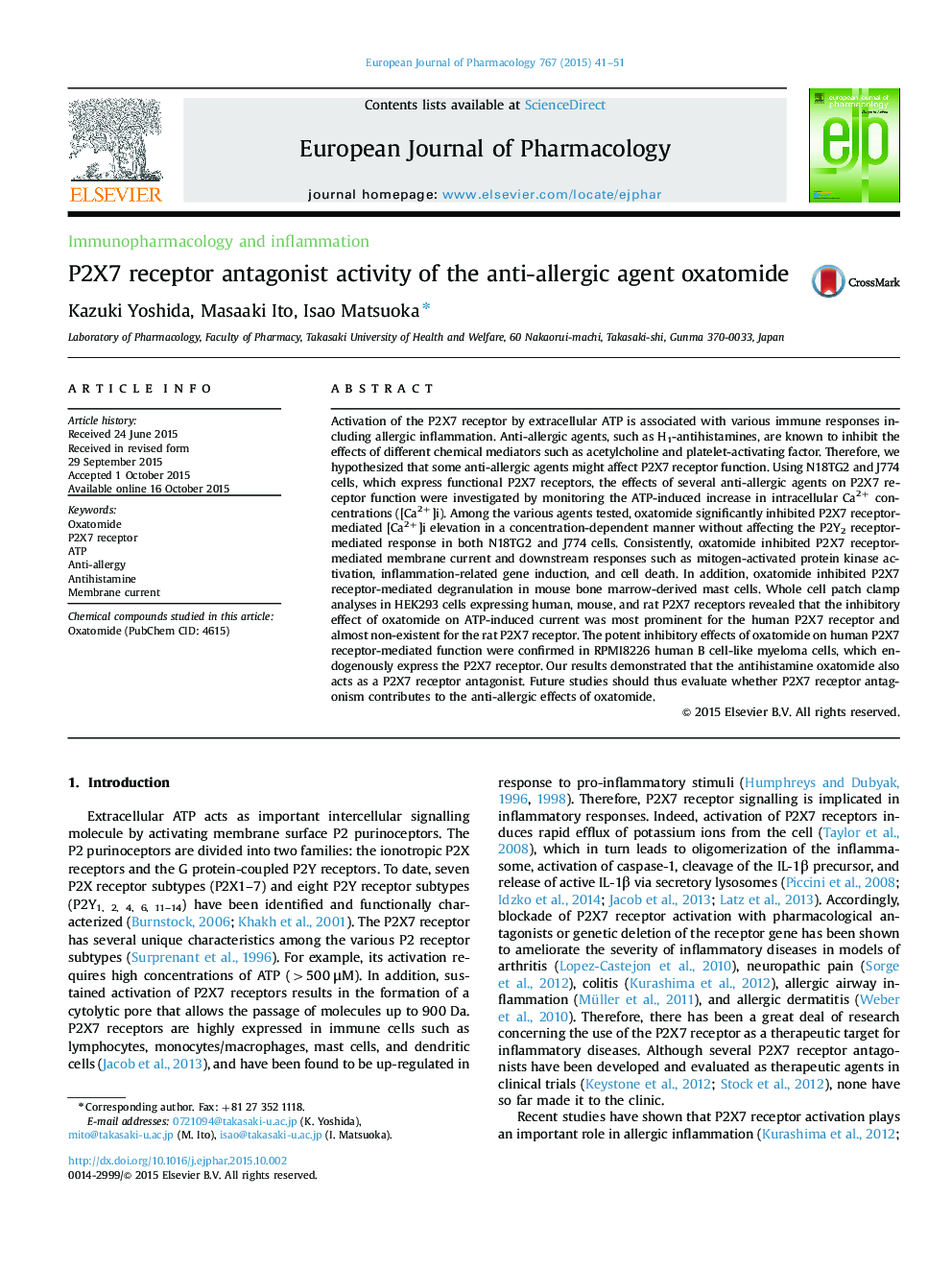| Article ID | Journal | Published Year | Pages | File Type |
|---|---|---|---|---|
| 2531416 | European Journal of Pharmacology | 2015 | 11 Pages |
Activation of the P2X7 receptor by extracellular ATP is associated with various immune responses including allergic inflammation. Anti-allergic agents, such as H1-antihistamines, are known to inhibit the effects of different chemical mediators such as acetylcholine and platelet-activating factor. Therefore, we hypothesized that some anti-allergic agents might affect P2X7 receptor function. Using N18TG2 and J774 cells, which express functional P2X7 receptors, the effects of several anti-allergic agents on P2X7 receptor function were investigated by monitoring the ATP-induced increase in intracellular Ca2+ concentrations ([Ca2+]i). Among the various agents tested, oxatomide significantly inhibited P2X7 receptor-mediated [Ca2+]i elevation in a concentration-dependent manner without affecting the P2Y2 receptor-mediated response in both N18TG2 and J774 cells. Consistently, oxatomide inhibited P2X7 receptor-mediated membrane current and downstream responses such as mitogen-activated protein kinase activation, inflammation-related gene induction, and cell death. In addition, oxatomide inhibited P2X7 receptor-mediated degranulation in mouse bone marrow-derived mast cells. Whole cell patch clamp analyses in HEK293 cells expressing human, mouse, and rat P2X7 receptors revealed that the inhibitory effect of oxatomide on ATP-induced current was most prominent for the human P2X7 receptor and almost non-existent for the rat P2X7 receptor. The potent inhibitory effects of oxatomide on human P2X7 receptor-mediated function were confirmed in RPMI8226 human B cell-like myeloma cells, which endogenously express the P2X7 receptor. Our results demonstrated that the antihistamine oxatomide also acts as a P2X7 receptor antagonist. Future studies should thus evaluate whether P2X7 receptor antagonism contributes to the anti-allergic effects of oxatomide.
